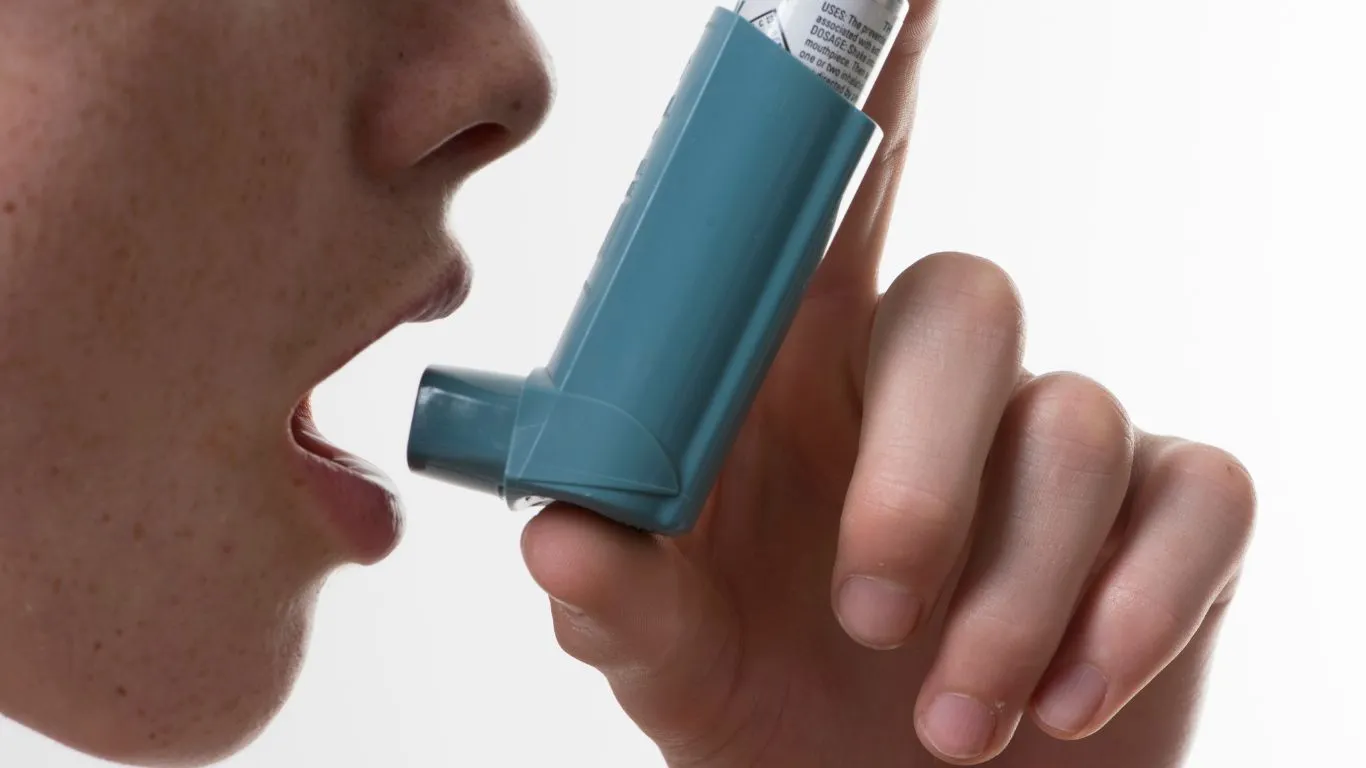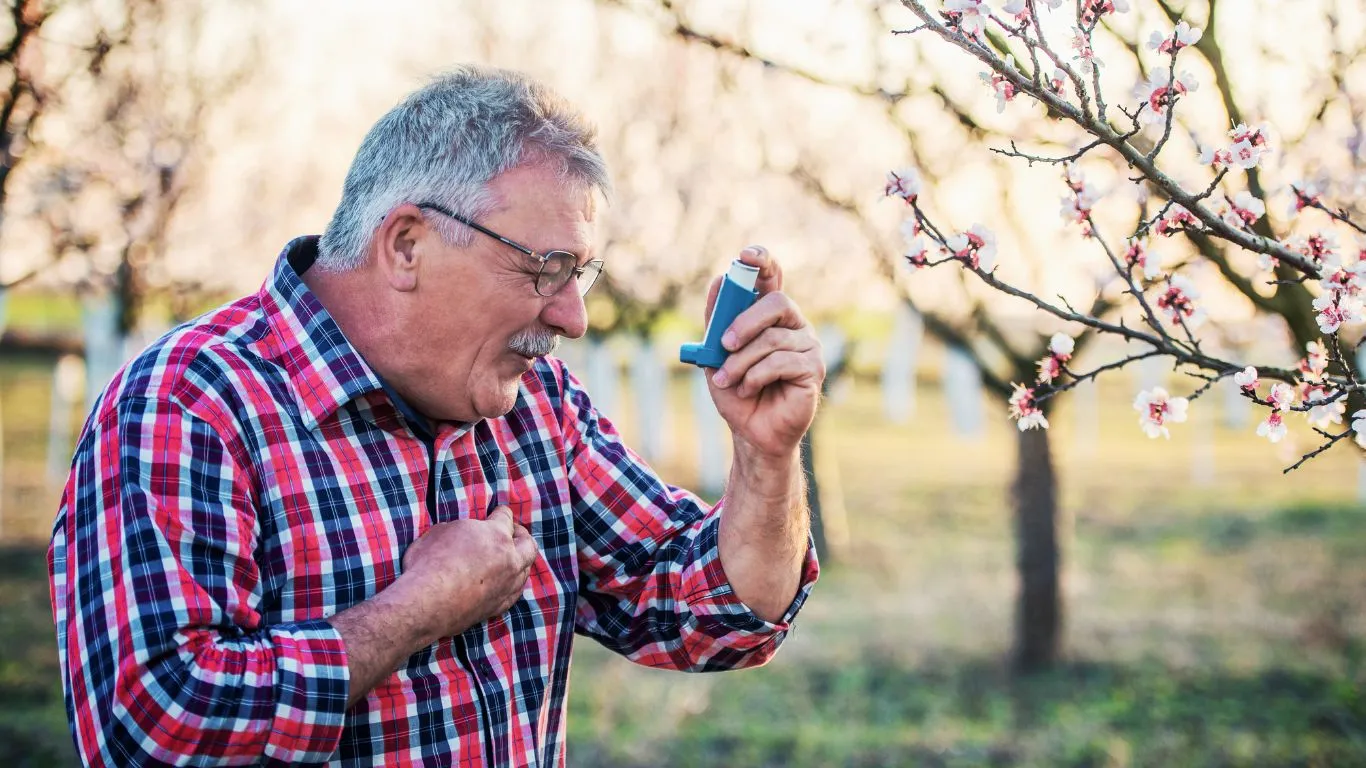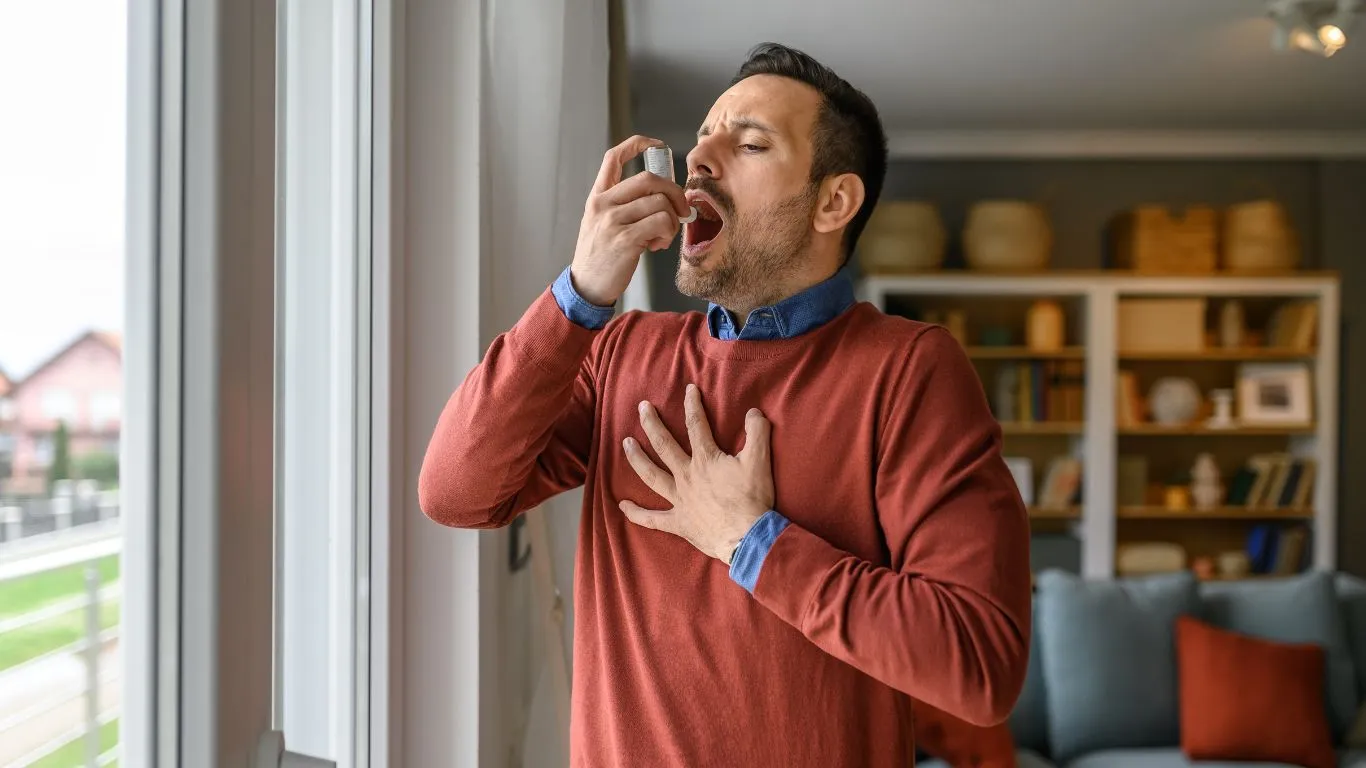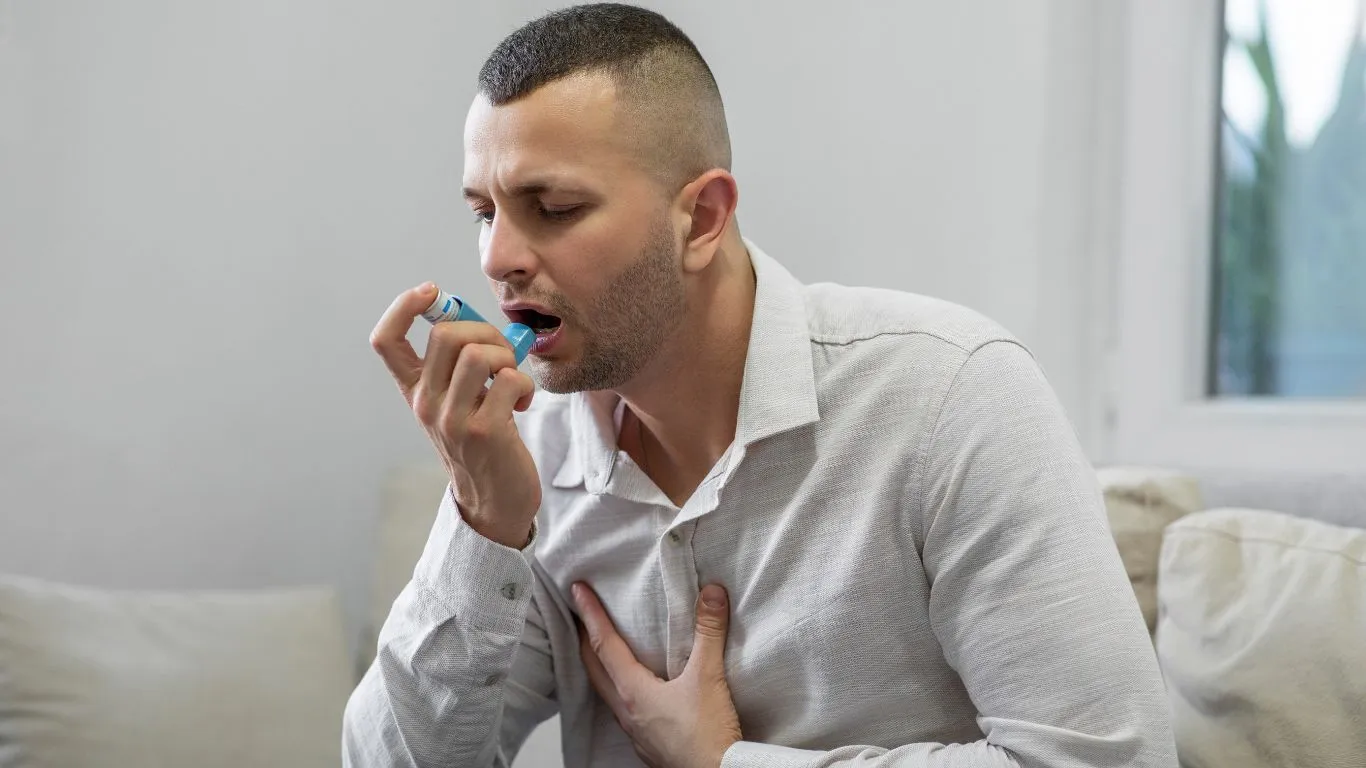Struggling with Asthma Symptoms After Climbing Stairs? Here’s Help
Ever find yourself a little out of breath after climbing a flight of stairs and wonder if it’s just normal or something more? If you’ve been experiencing asthma symptoms after climbing stairs, you’re definitely not alone. As a pulmonary nurse practitioner, I’ve seen many patients come in puzzled by this exact issue—shortness of breath, wheezing, or that tight chest feeling that just won’t quit after what seems like a simple physical task. It can be frustrating and, frankly, scary if you don’t know what’s going on.
Let me share some insights based on my years working directly with people managing asthma. Whether you’re newly diagnosed or have been dealing with asthma for a while, understanding why stairs can trigger symptoms—and what you can do about it—makes a huge difference. So, let’s break it down, step by step.
Why Do Asthma Symptoms Flare Up After Climbing Stairs?

When you climb stairs, your body demands more oxygen to fuel your muscles. For someone with asthma, this extra demand can be a real trigger. The airways, which are already sensitive and sometimes inflamed, may react by narrowing—making it harder for air to flow through.
Here’s what’s happening behind the scenes:
- Increased breathing rate: Stair climbing speeds up your breathing, which can dry out your airways.
- Airway constriction: In response to irritation or allergens, the muscles around your bronchial tubes tighten.
- Inflammation and mucus production: Your body might produce more mucus, clogging the airways further.
From personal experience, I’ve noticed that many patients underestimate how much even a short burst of activity can affect their asthma. It’s not always about feeling out of shape; sometimes, it’s the very nature of asthma to react unpredictably to what might seem like a minor exertion.
Recognizing the Early Signs
Knowing your body’s early warning signals can save you from a full-blown asthma attack. When climbing stairs triggers symptoms, these early signs might include:
- Shortness of breath: Feeling like you can’t catch your breath or breathe deeply.
- Wheezing: A high-pitched whistling sound when you breathe out.
- Chest tightness: That uncomfortable pressure or squeezing sensation.
- Coughing: Persistent or worsening, especially after physical activity.
From working closely with patients, I often remind them: don’t ignore these signs, even if they seem mild. It’s a signal that your asthma is flaring up and needs attention.
Common Triggers That Make Symptoms Worse After Climbing Stairs

Climbing stairs might be the activity, but several factors can amplify your symptoms. Understanding these triggers helps you prepare and potentially avoid uncomfortable or dangerous episodes.
- Environmental irritants: Dust, pollen, smoke, or strong odors can worsen airway inflammation.
- Cold air: Breathing in cold, dry air while exerting yourself can cause the airways to spasm.
- Exercise-induced bronchoconstriction (EIB): A common issue in asthma where physical activity narrows airways temporarily.
- Poor asthma control: If your baseline asthma is not well managed, even light activity like stairs can trigger symptoms.
In my practice, I’ve seen that patients who actively manage their environment and medication regimen tend to experience fewer symptoms. It’s all about understanding your unique triggers and working closely with your healthcare team.
How to Manage Asthma Symptoms After Climbing Stairs

Managing asthma symptoms after climbing stairs can feel like a daily challenge, but trust me, it’s totally doable. From my years of working as a pulmonary nurse practitioner, I’ve learned that a combination of practical strategies, medication, and lifestyle tweaks can make a huge difference.
First things first, if you’re noticing frequent symptoms after even light activity like stair climbing, it’s worth talking to your healthcare provider. Sometimes, asthma control isn’t where it needs to be, and your treatment plan might require adjustment.
Medication Tips That Actually Help
Here’s something I always tell my patients: medication isn’t just a “take when you feel bad” kind of deal. It’s about consistency and being prepared. If you’re prone to symptoms after physical activity, ask your doctor about a few key options:
- Rescue inhalers (short-acting bronchodilators): These are your go-to for quick relief. Using your inhaler 10–15 minutes before climbing stairs can often prevent symptoms.
- Controller medications: Inhaled corticosteroids or combination inhalers help keep your airways calm over the long term.
- Leukotriene modifiers: Sometimes prescribed if exercise or allergies trigger your symptoms.
Personally, I’ve seen patients’ quality of life improve dramatically once they get the right mix of medications. It’s about tailoring the treatment to your specific triggers and lifestyle.
Practical Strategies to Ease Your Breath
Besides meds, here are some easy-to-apply habits that can help you manage symptoms right when they hit:
- Warm up before activity: Just like athletes stretch before a game, a gentle warm-up helps your lungs adjust.
- Take it slow: Pace yourself when climbing stairs. Break it up if you need to—no shame in that!
- Focus on breathing: Practice controlled breathing techniques like pursed-lip breathing to help keep your airways open.
- Stay hydrated: Drinking water keeps mucus thinner and easier to clear.
One of my patients shared that simply slowing down and consciously breathing helped him avoid the panic that sometimes made symptoms worse. It’s a small change but so powerful.
When to Seek Medical Help

While many asthma symptoms can be managed at home, some situations definitely call for immediate attention. If you notice any of the following after climbing stairs—or any physical activity—don’t hesitate to get help:
- Persistent shortness of breath that doesn’t improve with your inhaler
- Difficulty speaking due to breathlessness
- Lips or face turning blue or gray
- Rapid worsening of wheezing or coughing
In my experience, educating patients on these red flags is crucial. It can mean the difference between a manageable flare-up and a dangerous asthma attack.
Working With Your Healthcare Team
Asthma isn’t a one-person battle. Collaborating with your healthcare provider can help you create a personalized action plan. Here are some key steps I encourage everyone to take:
- Regular check-ups: Even if you feel fine, keeping in touch with your doctor ensures your asthma stays under control.
- Update your asthma action plan: Adjust medications and strategies based on changing symptoms or lifestyle.
- Allergy testing: Identifying triggers can guide prevention efforts.
- Physical therapy or pulmonary rehab: These programs can improve your lung function and stamina.
From my hands-on work with patients, the most successful asthma management involves this team approach. Your input is just as important as your doctor’s expertise.
Preventing Symptoms: Lifestyle and Environment

Prevention really is the best medicine when it comes to asthma. Beyond medications and clinical care, small lifestyle changes can significantly reduce how often and how severely you experience symptoms.
Easy Changes That Make a Big Impact
- Keep your home clean and allergen-free: Regular dusting, vacuuming with HEPA filters, and controlling pet dander can reduce irritants.
- Manage stress: Stress can tighten airways, so finding calming activities like yoga or meditation helps.
- Maintain a healthy weight: Extra weight can make breathing harder and worsen symptoms.
- Avoid smoking and secondhand smoke: This is a huge irritant and can permanently damage your lungs.
- Stay active, but smartly: Regular exercise improves lung health but always listen to your body and prepare accordingly.
When I counsel patients, I emphasize that even small steps—like using a humidifier in dry weather or avoiding strong cleaning chemicals—can reduce asthma flare-ups after stairs or other activities.
Living Well With Asthma: Long-Term Tips and Mindset

Dealing with asthma symptoms after climbing stairs isn’t just about managing flare-ups in the moment—it’s about adopting a mindset and lifestyle that supports your lungs for the long haul. From my years in pulmonary care, I can confidently say that patients who take an active role in their asthma management tend to feel more empowered and live fuller lives.
Here are some real-world tips that go beyond just medication and immediate symptom control:
Track Your Symptoms and Triggers
Keeping a simple journal or using an app to note when symptoms happen and what you were doing helps both you and your healthcare provider understand your asthma better. For example, if you notice that stairs after being outdoors trigger symptoms more often, you might be dealing with an environmental factor like pollen or pollution.
In clinical practice, I’ve seen that this kind of tracking often reveals patterns patients didn’t expect, allowing for more precise adjustments to treatment plans. It’s a powerful way to stay ahead of your asthma.
Build Your Lung Fitness Gradually
Exercise and lung fitness are crucial, but I always advise my patients to take a gradual approach. Start slow, listen to your body, and celebrate small wins. This not only improves your lung capacity but also helps your confidence when tackling daily activities, including stair climbing.
Personally, I encourage simple routines like walking, swimming, or yoga, which tend to be gentler on the lungs while still building endurance.
Stay Educated and Informed
The world of asthma treatment is always evolving. New medications, devices, and strategies emerge regularly. Keeping up-to-date, whether through your healthcare team or reliable resources, ensures you’re not missing out on advancements that could make a difference.
I often recommend trusted organizations and professional bodies as go-to sources for accurate, evidence-based information.
When Climbing Stairs Isn’t So Simple: Understanding Severe Symptoms

While many people with asthma can manage symptoms well, some experience more severe reactions after exertion, including climbing stairs. This might include prolonged wheezing, intense chest tightness, or episodes where rescue inhalers provide limited relief.
If you find your asthma symptoms worsen over time or become unpredictable, it’s crucial to consult your healthcare provider promptly. In my clinical experience, this often signals the need for reassessment—sometimes new medications or further testing is required to get your asthma back under control.
Don’t hesitate to ask for a referral to a pulmonologist or asthma specialist if you feel your current management isn’t cutting it. Your breathing deserves expert attention.
Understanding the Role of Asthma Action Plans
An asthma action plan is a personalized guide created with your healthcare provider that helps you recognize worsening symptoms and know exactly what steps to take. This can include when to adjust medications, when to use your rescue inhaler, and when to seek emergency care.
From my perspective, having a clear, easy-to-follow plan removes much of the anxiety around symptoms after climbing stairs or during other activities. It empowers you to respond quickly and appropriately.
References
Disclaimer
This article is for informational purposes only and does not replace professional medical advice. If you experience severe or worsening asthma symptoms, please seek immediate medical attention. Always consult your healthcare provider before making changes to your asthma management plan.

Bianca Nala is a compassionate Nurse Practitioner with a strong background in primary and respiratory care. As a health writer for Healthusias.com, she combines her clinical expertise with a talent for clear, relatable storytelling to help readers better understand their health. Bianca focuses on topics like asthma, COPD, chronic cough, and overall lung health, aiming to simplify complex medical topics without losing accuracy. Whether she’s treating patients or writing articles, Bianca is driven by a single goal: making quality healthcare knowledge accessible to everyone.





